Diwali fireworks choke Delhi, angering Indians
Angry residents of the Indian capital, Delhi, are sharing images of smog, one day after Diwali celebrations saw huge quantities of fireworks set off.
Levels of particulate matter in the air hazardous to health rose to nearly 10 times the safe limit of 100.
Authorities had warned that Delhi faced a polluted Diwali because of factors like humidity and wind speed.
Diwali, the most important Hindu festival in north India, celebrates the victory of good over evil.
Fire crackers are regularly set off during the festivities but tend to worsen air quality.
Delhi’s local government announced last week that it would install air purifiers near roads in an effort to cut the effects of air pollution.
However, visibility across the city was extremely low on Monday morning, thanks to the thick blanket of smog covering the city. The hashtag #smog was soon trending on Twitter India.
“Good show last night, Delhi. Now choke!” read one angry tweet from user Pratik Prasenjit.
Before Diwali, there were several campaigns asking people to cut down on the use of fireworks, but similar initiatives in the past have got little attention.
Fire crackers have become synonymous with celebrations, and for some, it is an opportunity to show off their wealth. Business families spend hundreds of thousands of rupees to buy fireworks which are then set off in the course of a single night.
A World Health Organisation (WHO) survey in 2014 found that 13 of the most polluted 20 cities in the world were in India. Delhi was the most polluted city in the world, the survey added.
Air pollution is also a leading cause of premature death in India, with about 620,000 people dying every year from pollution-related diseases, says the WHO.
In addition to fireworks during Diwali, Delhi’s pollution in winter is aggravated by a drop in temperature which leads to the city’s poor burning rubbish at night to stay warm.
Agricultural waste is also set on fire across thousands of hectares around Delhi to clear cropland, which burns for days on end.

Delhi’s Diwali pollution problem
-
Levels of tiny particulate matter (known as PM 2.5) that reaches deep into the lungs more than doubled within a few hours on Monday to 750 micrograms per cubic metre in the city’s worst affected parts, India’s Central Pollution Control Board said
-
That is 30 times a mean guideline set by the World Health Organisation of 25 micrograms per cubic metre on average over a 24-hour period
-
The US embassy in Delhi said its air pollution index late on Sunday had breached the “hazardous” upper limit level of 500, at which it stops measuring levels of particulate matter
-
The index climbed to 1,126 by the early hours of Monday morning
-
More than two thirds – 220 million – of the 300 million children living worldwide in areas with pollution six or more times higher than international guidelines are in South Asia, a new Unicef report says
Courtesy : BBC
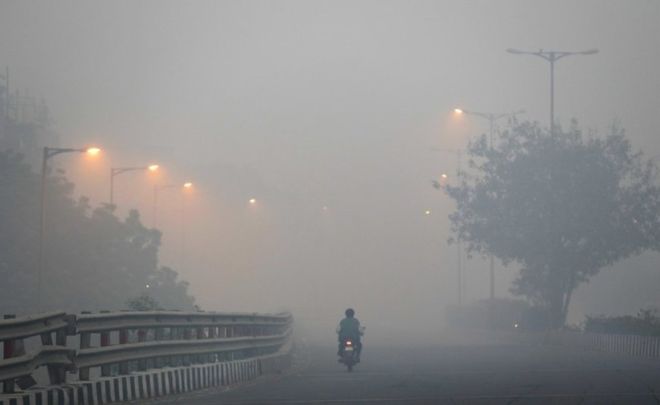
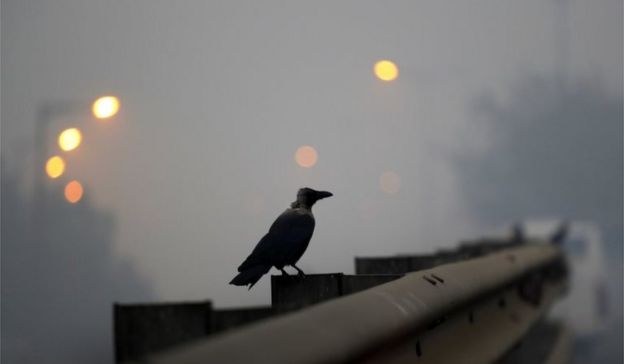 Image copyrightAPImage captionAuthorities issued pollution warnings in Delhi ahead of Diwali
Image copyrightAPImage captionAuthorities issued pollution warnings in Delhi ahead of Diwali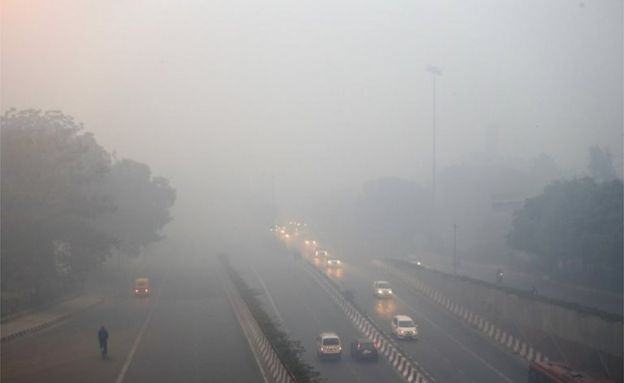 Image copyrightAPImage captionTraffic moved slowly on Monday morning
Image copyrightAPImage captionTraffic moved slowly on Monday morning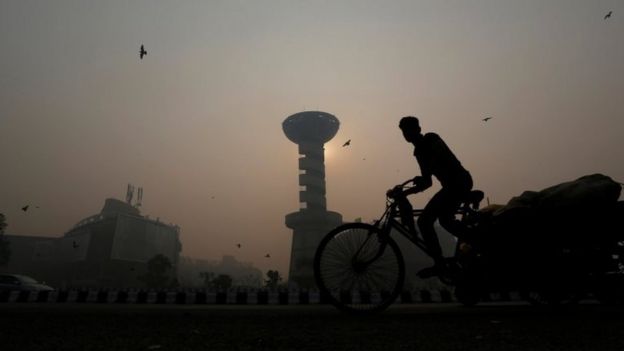 Image copyrightREUTERSImage captionThe hashtag #smog was trending on Twitter India
Image copyrightREUTERSImage captionThe hashtag #smog was trending on Twitter India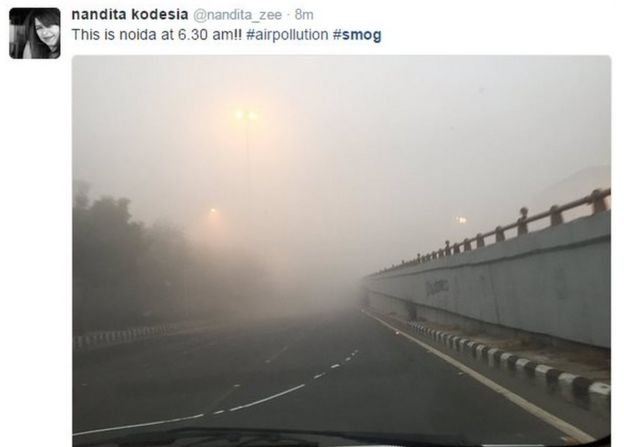 Image copyright@NANDITA_ZEE
Image copyright@NANDITA_ZEE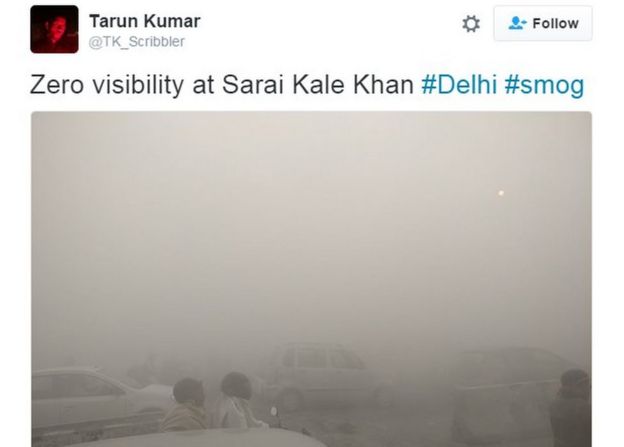 Image copyright@TK_SCRIBBLER
Image copyright@TK_SCRIBBLER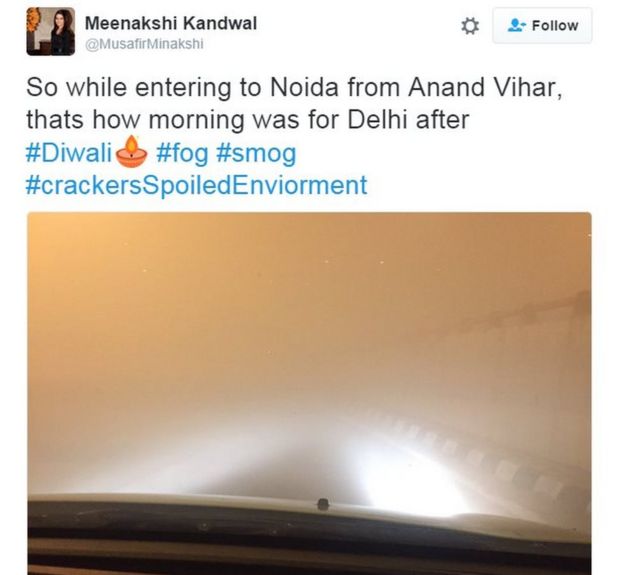 Image copyright@MUSAFIRMINAKSHI
Image copyright@MUSAFIRMINAKSHI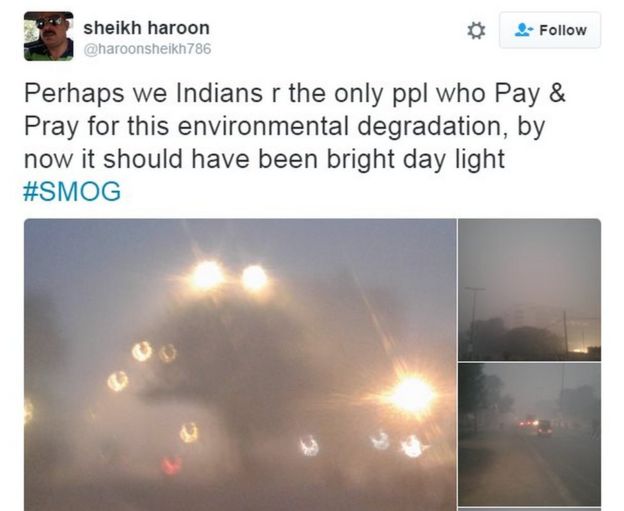 Image copyright@HAROONSHEIKH786
Image copyright@HAROONSHEIKH786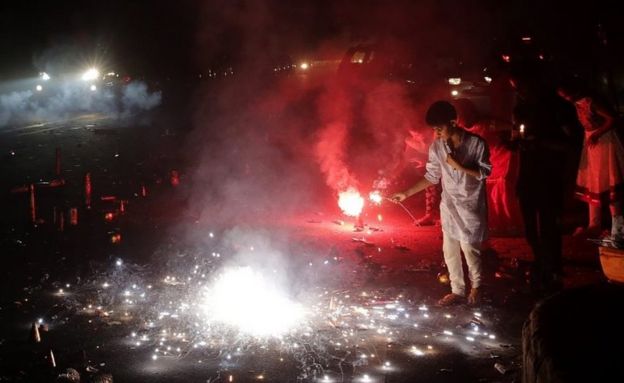 Image copyrightEPAImage captionFire crackers are regularly set off during Diwali but worsen air quality
Image copyrightEPAImage captionFire crackers are regularly set off during Diwali but worsen air quality Image copyrightAFP
Image copyrightAFP
